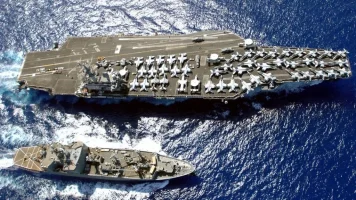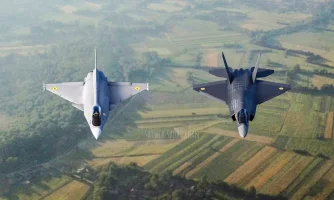- Views: 1K
- Replies: 6
The Indian Navy is setting its sights on developing long-range, jet-powered unmanned aerial vehicles (UAVs) to enhance its surveillance capabilities across the vast expanse of the Indian Ocean Region (IOR).
This initiative reflects a broader strategy to bolster maritime domain awareness and improve the Navy's ability to monitor naval activities in the region, ensuring quicker reaction times to emerging situations.
While the Navy is already in the process of acquiring MQ-9 Reaper drones for intelligence, surveillance, and reconnaissance (ISR) roles, officials are also exploring larger, jet-powered unmanned platforms to address limitations in operational speed and range.
A naval official highlighted the drawbacks of current High-Altitude Long-Endurance (HALE) UAVs powered by turboprop engines. While these UAVs excel at persistent monitoring, they lack the speed needed to quickly reach distant areas of interest within the IOR.
To achieve the desired capabilities, the Navy plans to collaborate with Indian defence and aerospace companies to conceptualize and develop HALE-class UAVs powered by jet or turbofan engines.
The Navy's specific requirements for these advanced UAVs include:
- Extended range: The UAVs must possess the range to cover the vast distances across the IOR.
- High speed: Jet propulsion will enable rapid deployment and reduce reaction times to events unfolding across the region.
- Advanced ISR capabilities: The UAVs must be equipped with state-of-the-art sensors and communication systems to provide real-time intelligence.
The IOR's growing geostrategic importance, coupled with the increasing presence of foreign naval forces, underscores the need for advanced ISR platforms.
The ability to maintain comprehensive and real-time situational awareness across the region is crucial for India's maritime security and power projection capabilities. The development of these long-range, jet-powered UAVs will be a significant step towards achieving that goal.


